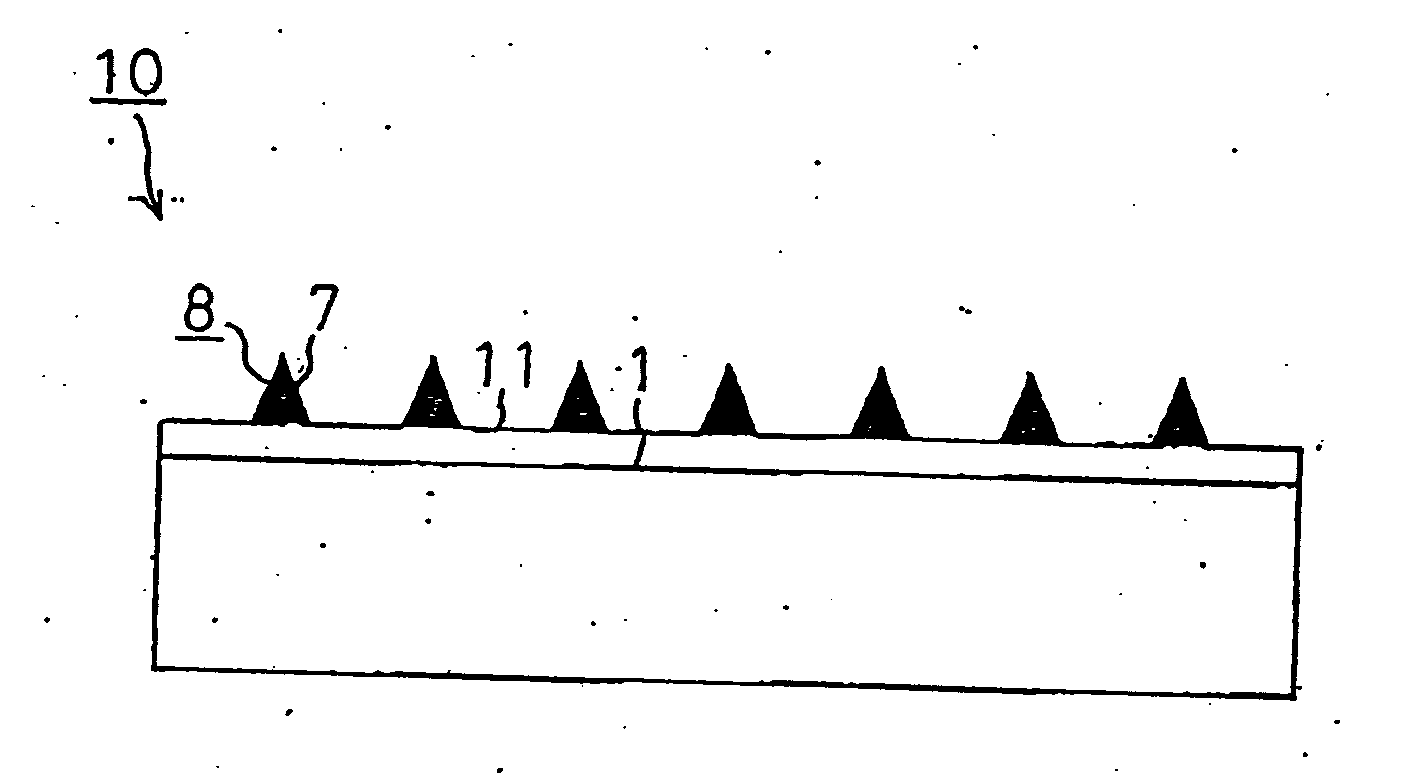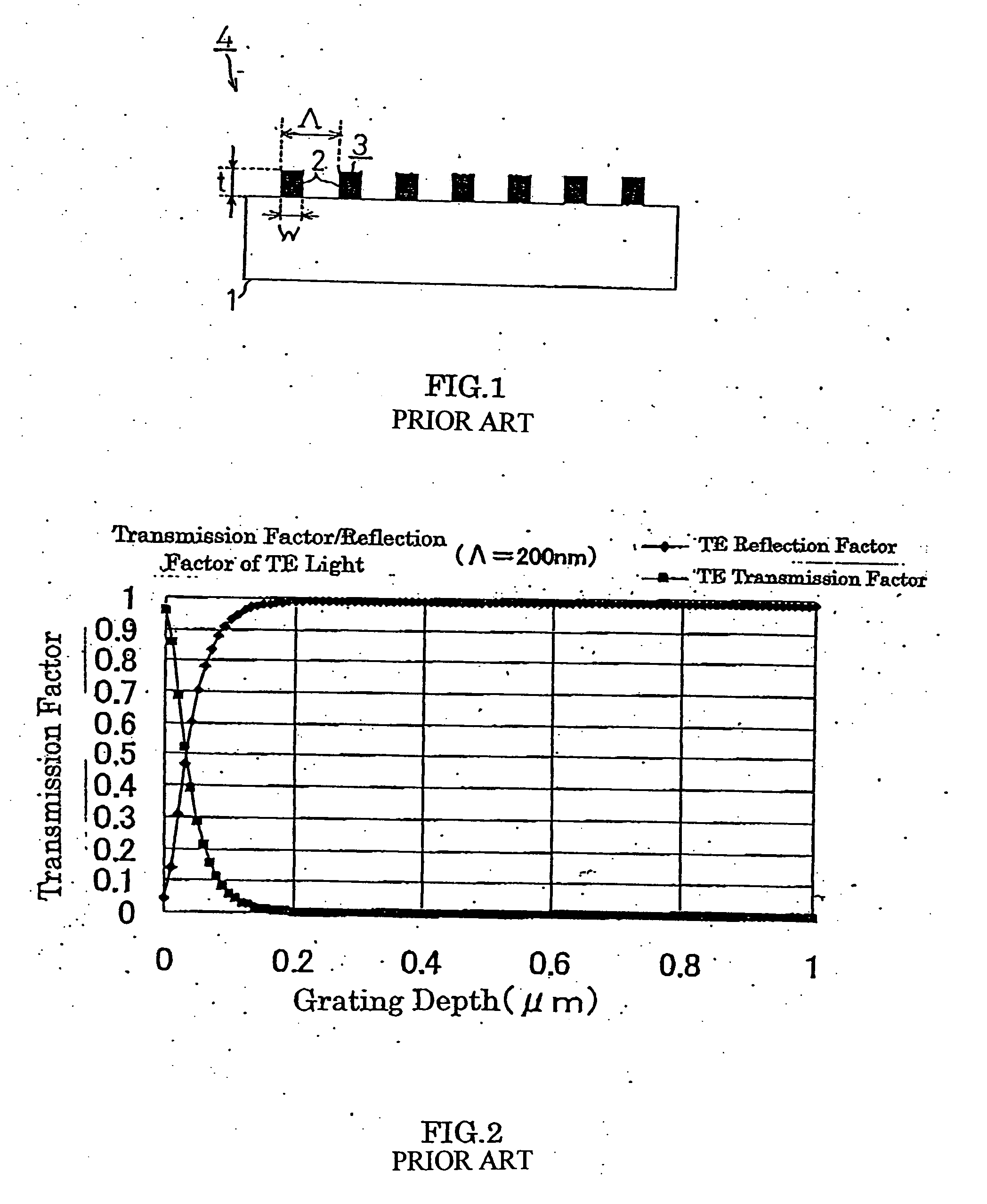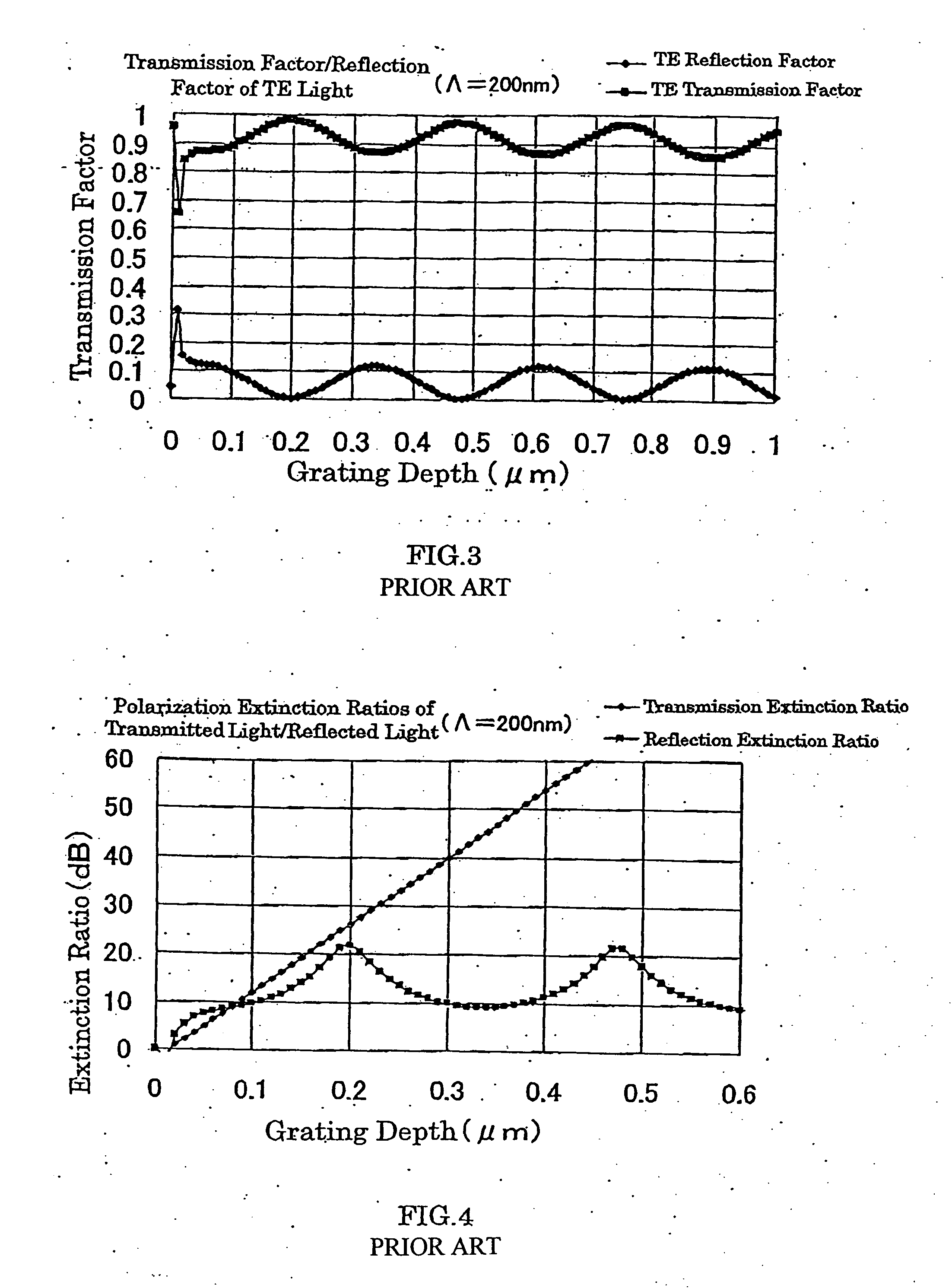Wire grid polarizer
a polarizer and wire grid technology, applied in the field of wire grid polarizers, can solve the problems of deterioration of the extinction ratio in such low wavelength, inability to achieve such precision, and time-consuming processing of the minute groove formed on the glass substrate, etc., to achieve excellent optical properties, maintain the polarization extinction ratio high and level, and increase the extinction ratio
- Summary
- Abstract
- Description
- Claims
- Application Information
AI Technical Summary
Benefits of technology
Problems solved by technology
Method used
Image
Examples
example 1
[0077] First, in EXAMPLE 1, the transmission factor / the reflection factor of the two polarized lights of TE and TM, which are orthogonal to each other, were calculated on the wire grid polarizer 6 in a structure shown in FIG. 6. For the calculation, the above-described RCWA method was used with 24 terms of the Fourier series.
[0078] In this calculation, for approximation of the metal wire 7, presumably provided was the three-layered metal wire 7 whose cross section was in a three-step shape as shown in FIG. 8.
[0079] The duty ratio of the first layer of the metal wire was presumably set as 0.4, that of the second layer as 0.266, that of the third layer as 0.133 and the film thicknesses of each layer were presumed the same, and the total film thickness t of the metal wire, that is, the depth of the grating was varied from 0 to 1 μm. The transmission factor / the reflection factor of the TE polarized light and the TM polarized light under this condition were calculated. At this time, th...
example 2
[0085] Next, in EXAMPLE 2, the transmission factor / the reflection factor of the TE polarized light and the TM polarized light were calculated on the wire grid polarizer 10 shown in FIG. 7 in the same manner as EXAMPLE 1. In the wire grid polarizer 10, a low-refractive-index layer 11 was formed on the light-transmitting substrate 1 having a high refractive index, and a wire grid structural body 8 with a taper-shape cross section was formed thereon.
[0086] More specifically, calculation was carried out on assumption that 20 nm of SiO2 layer as the low-refractive-index layer 11 was formed on the light-transmitting substrate 1 made of SF-6 (wavelength: λ=0.65 μm, refractive index: 1.797), a product of SCHOTT, and the wire grid structural body 8 in the same taper shape as that of EXAMPLE 1 was formed thereon.
[0087] As a result, the wave dependency of the polarization extinction ratio as shown in FIG. 13 was obtained.
[0088] As can be seen from FIG. 13, the absolute value of the polariza...
PUM
 Login to View More
Login to View More Abstract
Description
Claims
Application Information
 Login to View More
Login to View More - R&D
- Intellectual Property
- Life Sciences
- Materials
- Tech Scout
- Unparalleled Data Quality
- Higher Quality Content
- 60% Fewer Hallucinations
Browse by: Latest US Patents, China's latest patents, Technical Efficacy Thesaurus, Application Domain, Technology Topic, Popular Technical Reports.
© 2025 PatSnap. All rights reserved.Legal|Privacy policy|Modern Slavery Act Transparency Statement|Sitemap|About US| Contact US: help@patsnap.com



